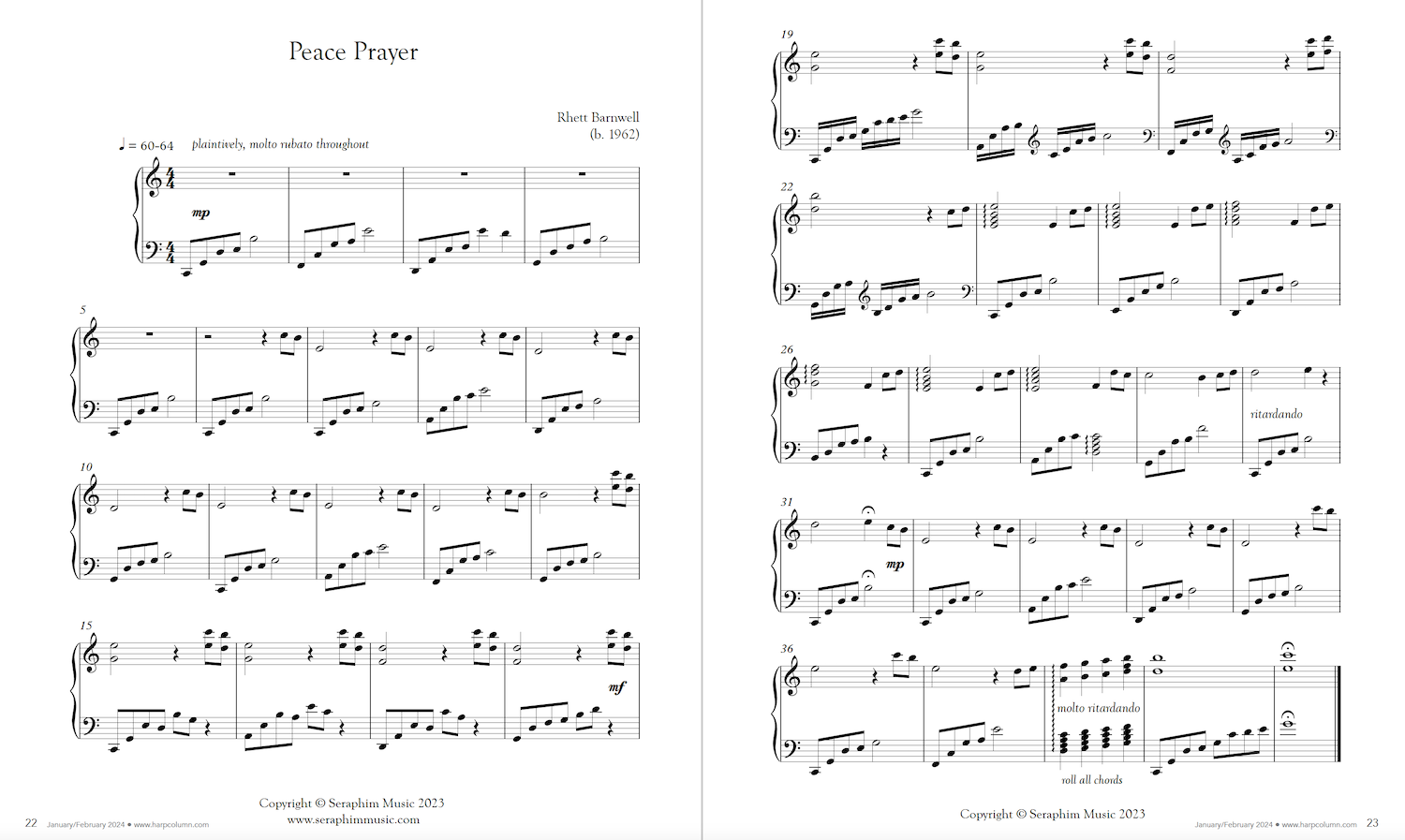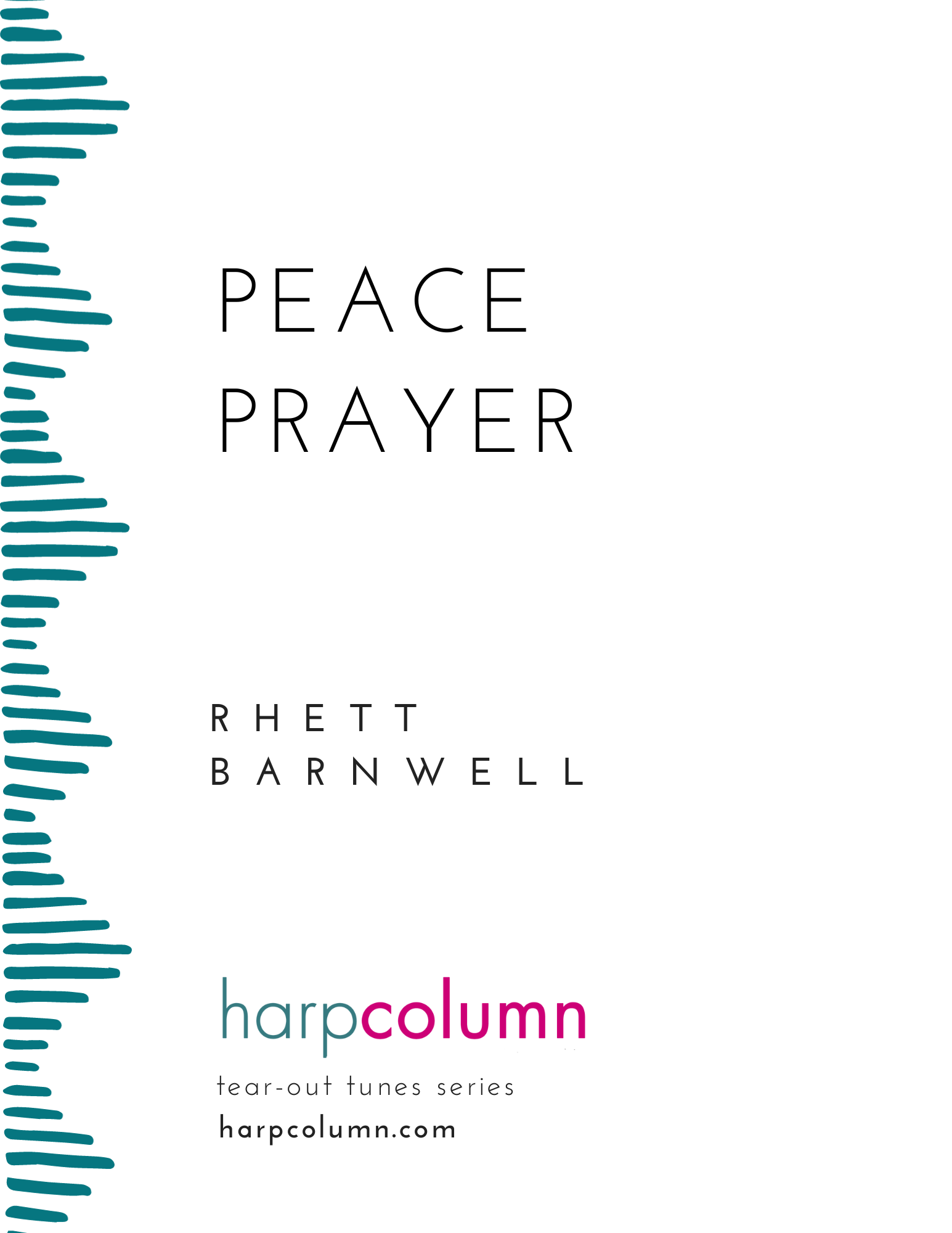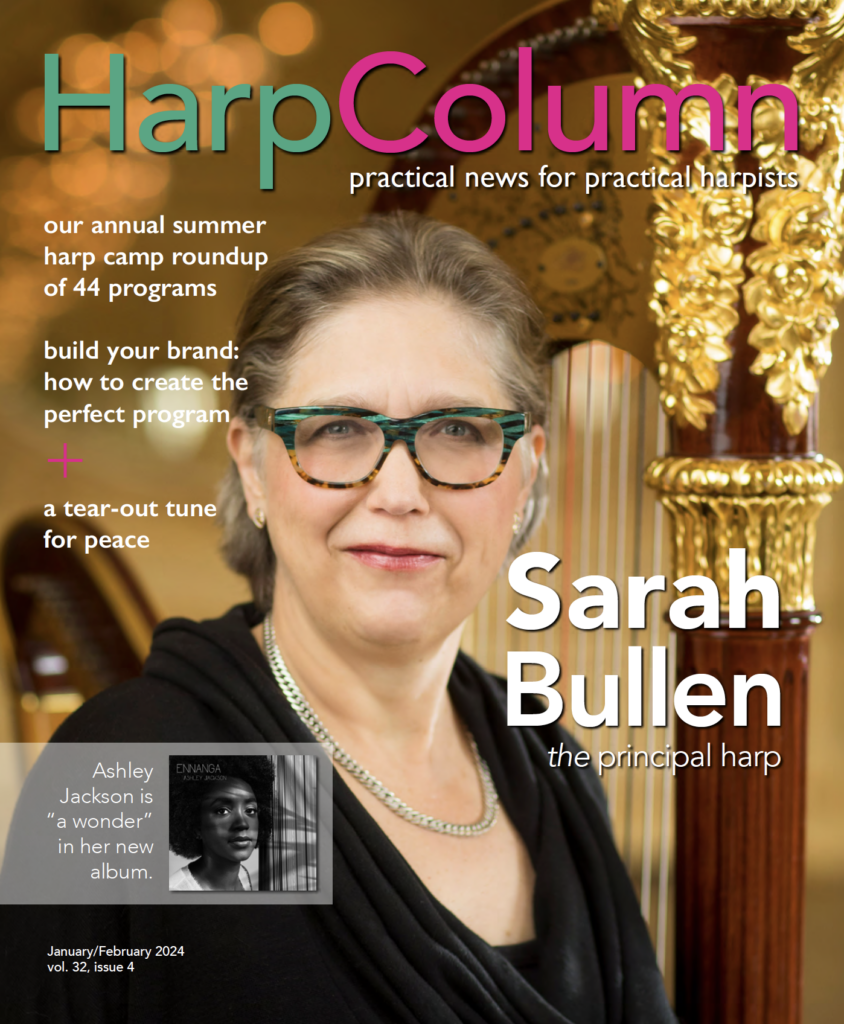
Download this issue to get this tune now!
This issue marks the first anniversary of our Tear-Out Tunes series. Based on the success of its first year, we are continuing the series through 2024, and we have some fabulous contributors lined up for year two.
Each installment of our Tear-Out Tunes series features a new piece written by one of the best harpist-composer-arrangers in the business. Each composer will tell you a little bit about their piece, and also give you some helpful tips for learning it and getting the most out of the experience.
The new piece (on the following pages) is yours to keep. We even put it right in the middle of the magazine so you can tear out the whole sheet and put your new tune on your music stand.
The initial inspiration for “Peace Prayer” came while in the mountains of North Georgia a few months ago. After the news of the horrible massacre in Israel on October 7, 2023, the piece quickly evolved into a prayer, even a pleading for peace. In the midst of all of the conflicts around the world, what can we as musicians do? The only thing I know to do is try to create beautiful music to counteract the sinister evil in this world.
I believe that my calling in life is something of a “harp evangelist”—to create works of beauty that may bring peace, healing, comfort, or joy to others. Although my initial harp study was geared toward being a classical pedal harpist, I was drawn to using the harp in therapeutic settings and began working as a volunteer in hospices, hospitals, and nursing homes in the early 1990s. As there was not a large repertoire of suitable music available at the time, especially that could be played on lever harp, I began to write my own arrangements and compositions. I have also taken up the challenge of making the music of classical composers, namely Bach and Handel, playable on lever harp. I initially had no aspirations of being a composer, let alone a published one, but people began asking for copies of my music. The Virginia Harp Center asked me in 1999 if they could sell my music, and that spurred the creation of my publishing company, Seraphim Music. Sylvia Woods then encouraged me to put a collection together, which I titled A Serenade for the Soul, that has been a best seller ever since. I have been extremely grateful over the years that so many harpists are using my music in therapeutic, sacred, and performance settings.
Many of my compositions are for voice and harp, where the text provides a framework for melody and rhythm. For purely instrumental works, I turn to various sources for inspiration, such as nature, art, spiritual experience, etc. My method of composing is largely subconscious—I have studied music theory and composition at the graduate level, but I must admit I do not generally follow that methodology. Usually, in the right moment, a melody will drop into my head, and then I work it out at the harp. Once, I actually got the tune for a complete piece while I was driving, and I had to pull over and write it down on a napkin!
In this piece, there is the recurring motif of downward “sighs” or “pleas.” It is repetitive by design, and the left hand makes use of regular patterns. In a way, this melodic idea is something of a mantra, a device used in various practices to facilitate deep inner prayer or meditation. I purposefully repeat this melody, with variations, to create this sense of inner petition. It should be played with great feeling and freedom, with much rubato throughout. I sometimes find myself playing the two eighth notes at the beginning of the theme as a dotted eighth and sixteenth note instead of two even eighths, usually on the repeat. I think it’s more like the manner in which eighth notes in French Baroque music are often “swung.” The left hand may look a tad daunting, especially when the sixteenth notes appear, but these are actually relatively simple patterns, beginning with 4-2-1 and then a crossunder, followed by whatever fingers are needed to finish the run. Be sure to keep the fourth finger low and it will be a cinch.
I feel honored that Harp Column asked me to write this piece, and it is my hope that each time this piece is played, a prayer for peace in this world will go out. •







